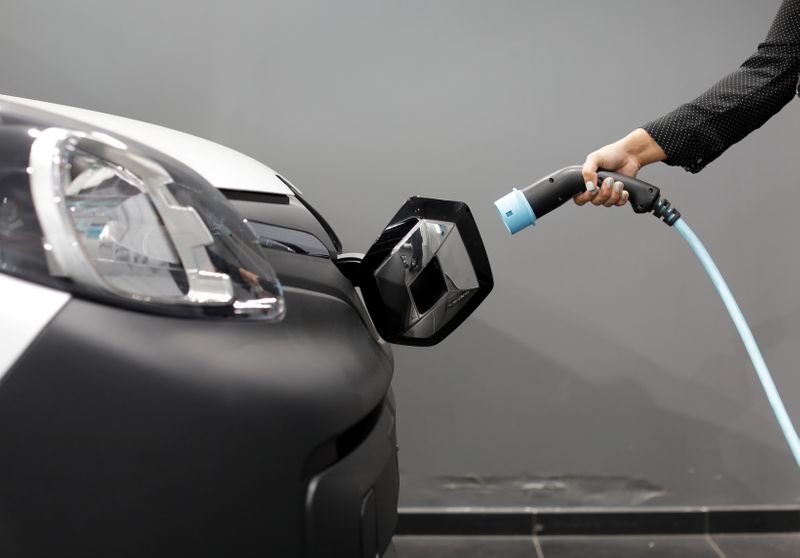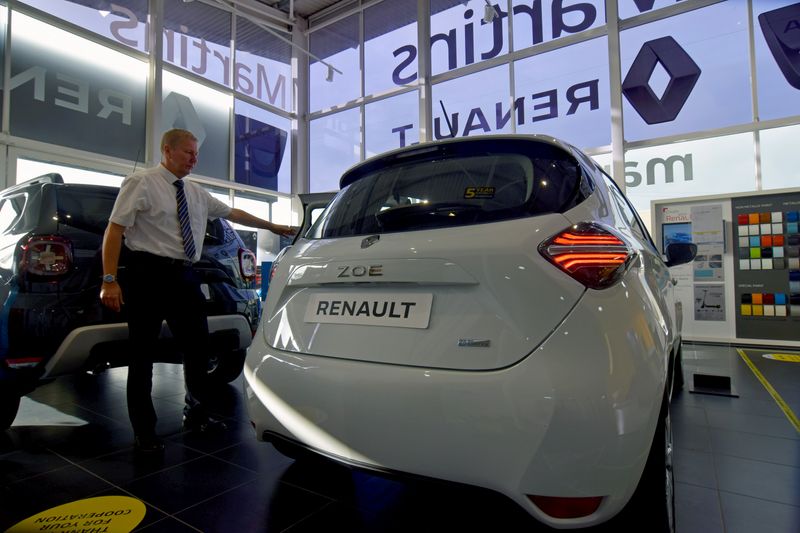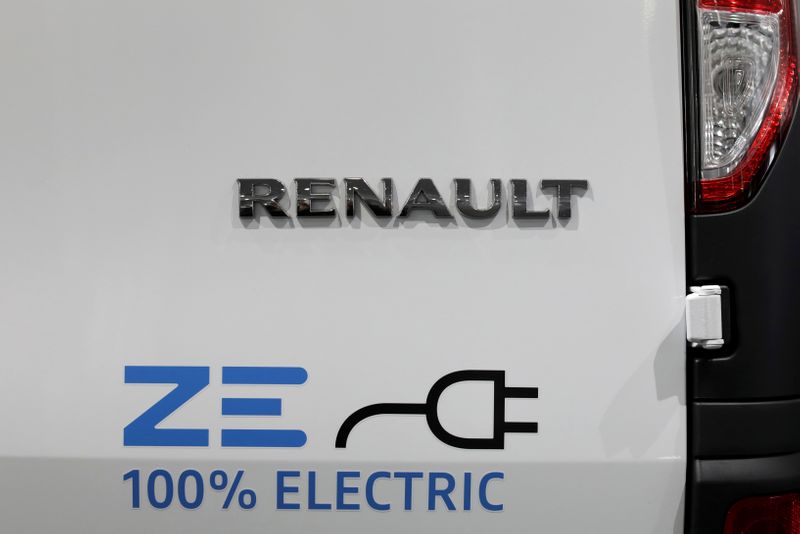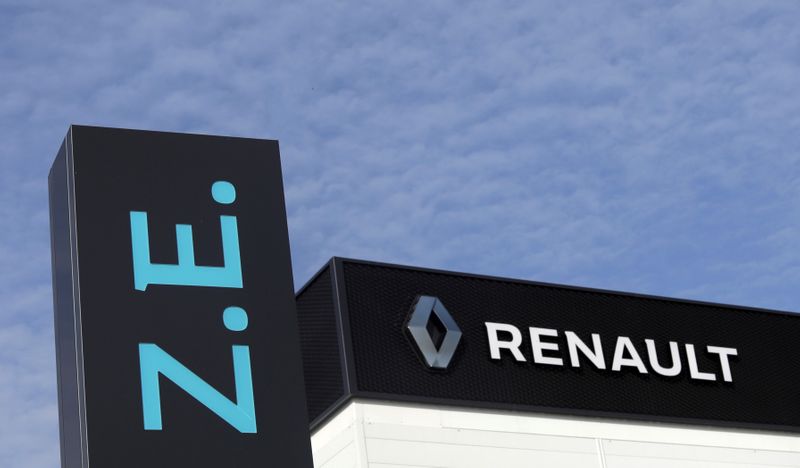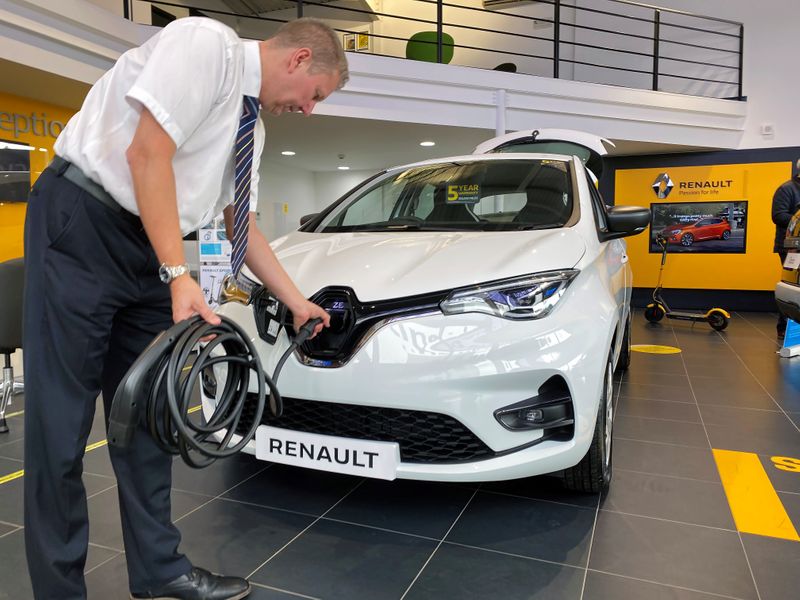READING, England/PARIS (Reuters) – Steve Tomlin, who runs a Renault dealership in Britain, says sales of the Zoe small electric car have shot up this year, a turnaround he partly puts down to a fading of “range anxiety”, the fear of running out of power mid-journey.
The revamped model, which has accounted for a third of Tomlin’s sales for a couple of months this year, has a range of 400 km (249-mile). By contrast the previous model, which drew much lower sales, offered 300 km when fully charged.
“Range anxiety has gone away and once you explain how easy it is to live day to day with an electric vehicle, that has a big impact on sales,” said Tomlin, general manager of Martins Renault & Dacia in Reading, about 65 km west of London.
Renault told Reuters that UK sales of the Zoe had more than doubled this year, and that in France its zero-emission cars had outsold its diesel models this year through to the end of September – 19% versus 18% – in a significant milestone.
The company said it had trained 30,000 dealer staff across Europe on electric-vehicle technology.
“At the beginning, we were facing some psychological barrier linked to autonomy: oh la la, am I going to have a breakdown, I won’t have any more electricity,” said Denis le Vot, Renault’s head of sales. “We learned these lessons very well.”
Yet there’s a hard road ahead, and range and staff training is not enough. High battery costs and lack of manufacturing scale mean electric vehicles (EVs) are still more expensive than conventional vehicles – often in the region of 20-30% more.
This means Renault and other automakers rely on government subsidies to support demand, but such aid is patchy across Europe.
Battery costs are, however, expected to fall further, meaning some EVs should cost same as or less than combustion-engine models around the middle of this decade, according to industry experts.
“The first firms to achieve the ultimate goal – an affordable, unsubsidized electric vehicle – will gain a valuable competitive advantage,” Bain & Company said in an Oct. 29 report.
Until then, carmakers need to sustain electric sales and build up production muscle, but avoid overstretching their finances while they sell a lower-margin product.
Renault said its approach relied on making use of government subsidies and offering discounts on EVs, installing free charging stations for customers, along with the staff training.
In France, government subsidies, combined with a scrappage scheme and discounts from Renault, can shave up to 11,500 euros ($13,600) – more than a third – off the price of the Zoe, for example.
INTENSE COMPETITION
Aside from the financial pressures and the challenges of changing decades-old consumer behaviour, however, Renault also faces fierce competition at a time when all carmakers have to build up EV sales to meet strict EU emissions limits.
The Zoe may be accruing sales, but it was still a distant second to Tesla’s Model 3 globally in the first half of this year, while the race is intensifying as carmakers from Volkswagen AG <VOWG_p.DE> to Toyota Motor Corp invest hundreds of billions of dollars to flood the market with new models.
Transport & Environment, a group campaigning for cleaner travel, estimates EVs will triple their market share in Europe this year, after making up 8% of European car sales in the first half of 2020.
“What has changed this year is not the subsidies but the fact that carmakers have invested in and brought forward adequately-priced vehicles with adequate performance,” said Julia Poliscanova, Transport & Environment’s senior director for vehicles.
SUBSIDIES DRIVE SALES
Yet, for the foreseeable future, subsidies are crucial.
“Whether it’s China or elsewhere, you still need a government mandate and support for EVs,” said Terrence Curtin, CEO of auto supplier TE Connectivity Ltd.
Norway has shown that huge subsidies for EVs, including tax breaks and low road tolls, have worked so well that a typical buyer of a small electric Nissan Leaf is “an average working man aged 30 to 50,” according to Frode Lehne, head of Mobile Skøyen AS, a Nissan Motor Co dealership in Oslo.
Ulf Tore Hekneby, a managing director at Harald A. Moller AS, which imports many Volkswagen group brands into Norway, said 91% of the Audis and 58% of the VW brand cars the company sold in Norway this year to September were electric.
Some European governments are upping their commitments.
Germany, for instance, doubled its electric car subsidies to 6,000 euros in the summer as part of a recovery plan for an auto industry hit hard by the pandemic, while France also raised its subsidy to 7,000 euros from 6,000.
But it’s harder in other European markets with less generous subsidies or where incomes are lower.
Sales in the Baltic states, for instance, have suffered because the countries either don’t offer subsidies, or those on offer are not enough to make EVs affordable, according to Hekneby of Harald A. Moller, whose parent group has dealerships there.
A total of 191 EVs were sold across the industry in Latvia, Lithuania and Estonia during the second quarter, versus 12,156 in Norway, even though the Baltic countries have a combined population slightly larger than Norway’s.
“Demand is close to zero,” Hekneby said.
($1 = 0.8461 euros; $1 = 8.7369 Swedish crowns; $1 = 0.7673 pounds)
(Reporting By Nick Carey; editing by Joe White and Pravin Char)

